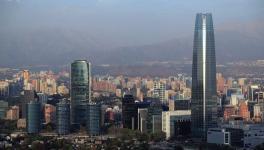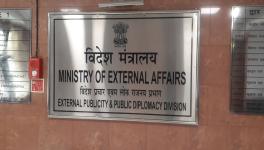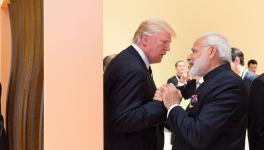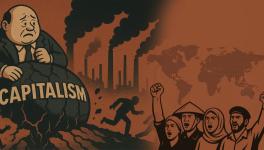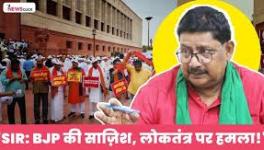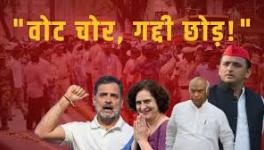Capturing New Politics of the July 9 General Strike
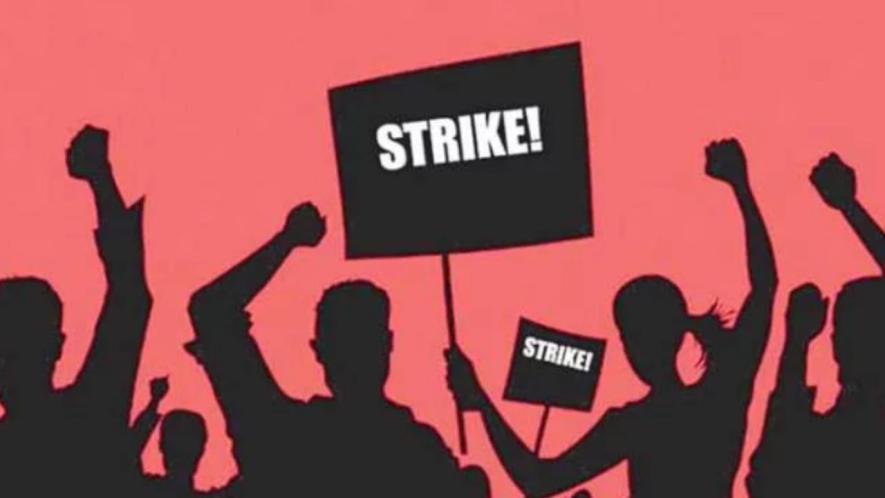
Representational Image.
India is preparing for the 22nd general strike in its neoliberal period. These strikes are usually seen as strikes based on contemporary economic issues and worker demands. And, from this emanates the socio-psychological limitations of realising the actual political potential of the general strikes. This creates a lacuna, the inability to transform these strikes as weapons against the capitalist state and the system as a whole, which calls for a quantitative and qualitative study of strike-struggle. This is an important task for all working-class parties to understand the stage and routes of development of capitalism and its most precious creation – the modern working class.
Bourgeois critics and their spokespersons have always attempted to dilute the perspective of general strikes by raising doubts about its effectiveness. While half of them raise questions about its success, the rest mourn the economic loss and livelihood loss of poor people impacted by strikes.
For one day, the masters of plunder turn into self-sacrificing saints. The only answer to this hypocrisy is the development of class-consciousness and expression of class strength through strike actions, when the strikers assess their numbers on the street and the society recognises its actual driving force i.e., the working people.
From this point of view, a strike-action is an exercise in self-assessment of the striking power, organisational capacity and reach of the strikers participating in the action. At the same time, a general strike-action is also pivotal for proper evaluation of the level of political consciousness, i.e., the degree of penetration of politics of strike within the strikers. It is crucial to identify the strengths and weaknesses of the ongoing organised working-class movement in this regard.
Undoubtedly, a general strike has great economic implications. It creates a rupture in the production and circulation of commodities and services, not only of a specific sector, but across a wide web of value chains and different stages of value accumulation. A general strike creates fissures in four class processes -- production, appropriation, distribution and receipt of surplus values. The simultaneous attacks on these four processes expose class antagonism, and bring out in open the class character of the State, thus making the distinction between the two camps overtly prominent – the driver and the subject of an oppressive state.
Generally, this is not a spontaneous process; it doesn’t flow free from economic attack; rather, a general strike transcends to a political one if the strikers can identify the nature of the State through their struggle and experience.
There is a remarkable phenomenon visible in the current Indian experience of strike-struggle. To understand this, we need to decode and analyse some recent strikes in India. Though strike statistics are quite unreliable and unavailable in India, with government reports a blatant underestimation and suppression of reality, let us follow the trend presented in it to have an idea of the changed dynamics of the new labour regime.
The Central government publishes a report annually called Statistics on Industrial Disputes, Closures, Retrenchments and Lay-offs in India, though the last report available in public domain was published in 2023. A study of the reports of the past two decades shows that the number of industrial strikes, the number of strikers and loss of man-days have drastically reduced throughout this time period. At the same time, general strikes have become more consistent, participative and militant. This is a departure from our traditional understanding of the relation between industrial and general (economic and political) strike.
In his 1912 article, ‘Economic and Political Strikes’, V.I Lenin wrote, “When the movement was at its highest (1905), the economic basis of the struggle was the broadest; in that year the political strike rested on the firm and solid basis of economic strikes.” “In the first quarter of 1905, for instance, economic strikes noticeably predominated over political strikes... In the last quarter of 1905, however, the ratio was reversed… But all the time there was a connection between the economic and the political strike.” But, in the current Indian scenario, the reality certainly appears to be different.
The reason lies within the changes in the process of production and the relation of employment as well as the construction of the whole social production-reproduction ecosystem as a gigantic capitalist machine of surplus extraction. Let us go step by step.
The modern stage of capitalism, with unprecedented development of transport, communication and remote operation, has fragmented the process of industrial production into numerous layers. Globalisation and eventual existence of different economic zones facilitate this process with supply of the cheapest labour and raw-materials at the service of capital.
For instance, an auto OEM (Original Equipment Manufacturer) factory may have 200-300 tier-1 suppliers who provide components and systems, such as engines, transmissions, brakes, and electrical systems; 1,500-2,000 tier-2 suppliers who provide sub-components and raw materials; and thousands of tier-3 suppliers who provide raw materials, commodities, and basic components to tier-2 suppliers. The total suppliers are over 5,000 across all tiers.
This fragmentation of the work-process has dismantled the old Fordist concept of a big, one-roof shop-floor. The rate of surplus extraction of these big companies largely depends upon the capacity to exploit its supply-chain workers through squeezing their employers i.e., the suppliers. There is little scope for workers of those supply-chain companies to fight a united and strong industrial battle against their employers due to the paucity of numbers in a single establishment, a comparatively lower rate of profit of the employers down the value-chain and limitation of organisation due to fragility and precarity of the employment and spread of the production-chain across the globe.
The second aspect is the massive non-regularity in the employment process. In strategic public sectors, the number of contractual employees has come to 70% or more of the total strength. One can imagine the situation in the private sector.
A contractual or fixed-term worker, an apprentice or trainee, employed for Rs 10,000 per month salary or stipend, will be naturally sensitive about the status and protection of his/her job. A huge army of unemployed youth is standing at the factory gate to replace them.
For migrant workers, there are other forms of social-insecurities over and above these issues. There is a very little chance for them to lodge strong, factory-based industrial action until the mass of the workers face retrenchment or any other penal actions. Their living and working conditions increasingly become subject to further deterioration and disgrace. They want to protest but are still vulnerable in getting organised at the factory level.
Most importantly, modern capitalism has expanded its clutches over the farthest and deepest points of Indian society and over all strata of working people. It has established an invisible surplus extraction mechanism through penetration of the market, finance and State to ensure the sub-human subsistence of the mass of the population, forced attachment of them into their temporary unsecured occupation and transfer of their surplus toward the corporate masters of the regime.
Self-employed, petty-producers, traders or peasants – all are prey to the diktats of the market and the State, run by the big bourgeoisie and international finance capital. The mass of the Indian people, the bottom 50%, are surviving in inhuman conditions and are frustrated and angry over the existing socio-political system.
A general strike gives all these different constituents of “collective workers” a scope to express their discontent and rage. It goes without saying that industrial workers in strategic and manufacturing sectors will be the spearhead of this collective action, but its spread engulfs a large section of the working people. And here lies the material reason for strong support to the general strike across the country. Also, with this emerge new tasks for transformative political forces.
The ground for transforming general strikes toward a political strike is ready. But the nature of the strike is still defensive – workers are trying to resist the changes introduced by capitalists, worsening their living and working (say, repealing of the labour codes). We must internalise that capitalism is in crisis and the strike-actions of our time will evolve as more offensive, not only to protect but to transform the existing reality.
Certainly, crisis demands militant action from the working class; but to give the general strike a true political character, the requisite will be to advance and popularise transformative demands; demands that not only expose the ruling State and system but create an imagination, a glimpse of the future society.
A campaign with concrete alternatives can give a ray of hope to this great, diverse and dispersed productive force of Indian society – united by a general strike, expressing its existence and strength to the world. As the enemies say - Behind every strike lurks the hydra [monster] of revolution; it is our task to shake their fortress with the July 9 general strike.
The writer is a leader of the Centre of Indian Trade Unions (CITU). The views are personal.
Get the latest reports & analysis with people's perspective on Protests, movements & deep analytical videos, discussions of the current affairs in your Telegram app. Subscribe to NewsClick's Telegram channel & get Real-Time updates on stories, as they get published on our website.















